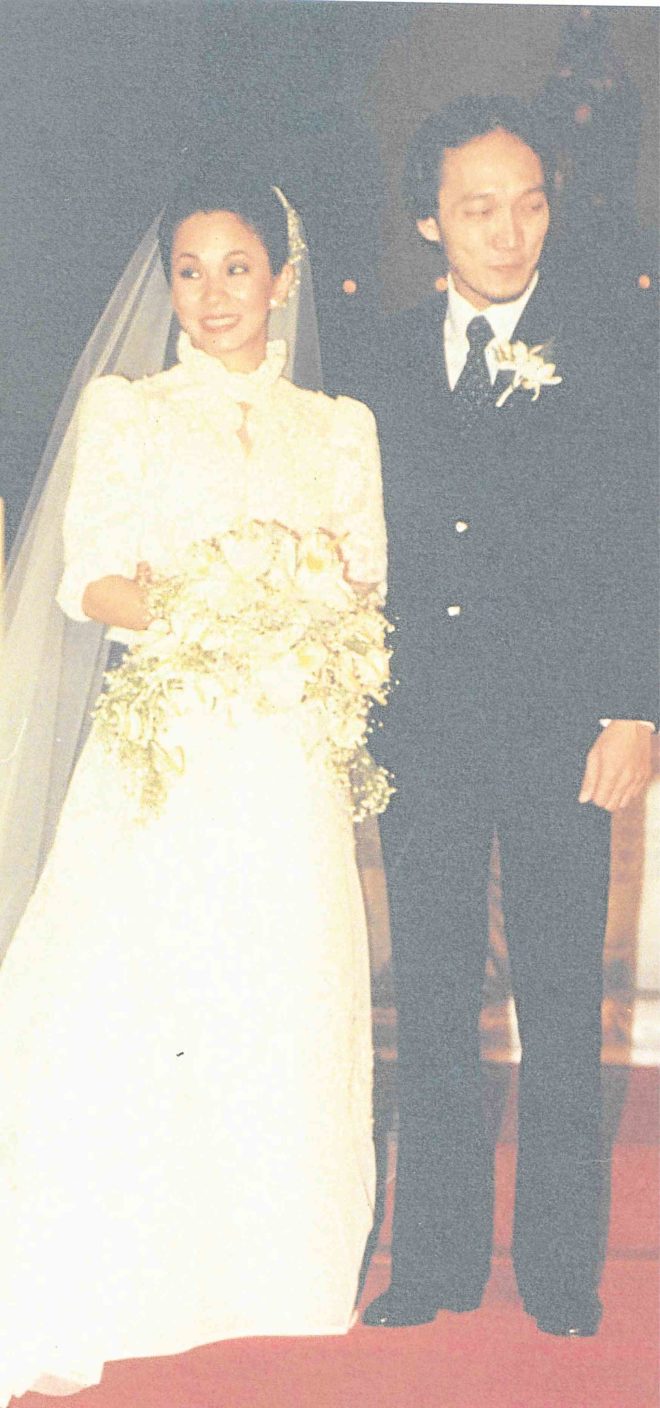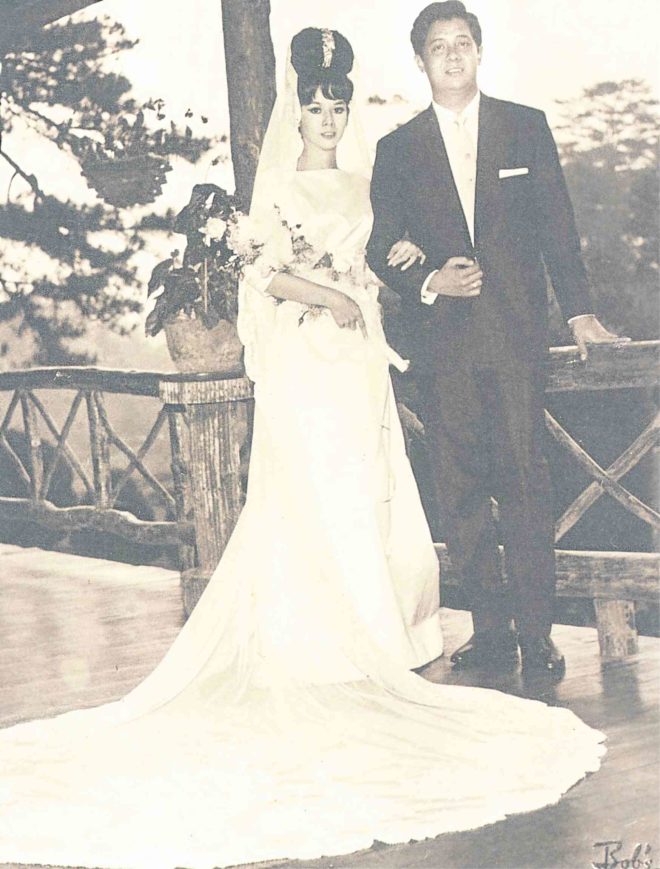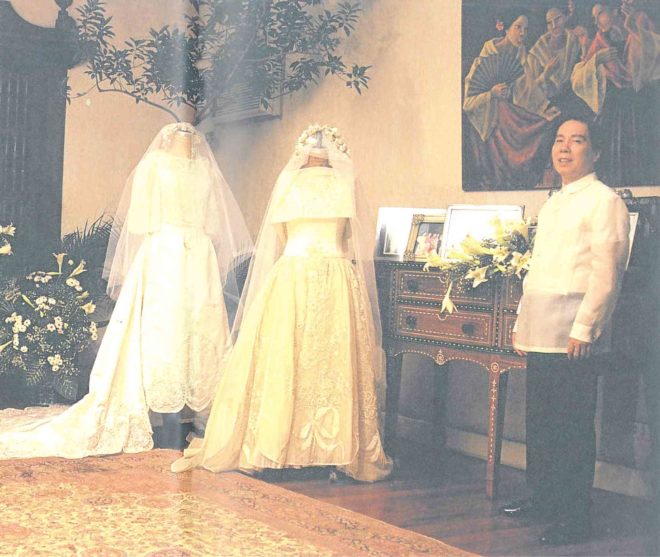
Pitoy Moreno died Jan. 15, 2018, after a long stay in the hospital. He was 89. Yet that number of years couldn’t even begin to indicate how much he had done in life—a career overflowing with accomplishments—and how many friends he had made, how many lives he had touched across classes of Philippine society.
Pitoy was truly multidimensional; he was many things to many people: a fashion designer/couturier, a mentor/father figure to models and beauty queens, a philanthropist and a power icon in Philippine society. I have written about many of these facets through the decades.
Below is Pitoy, the foremost designer and power figure, I wrote about in 1987 and in 1991. They’re excerpts from my book, “i’m afraid of heights (or why i can’t social-climb),” published by Inquirer Books in 2012.
Rereading these excerpts makes one nostalgic. They remind one of the reign of Pitoy Moreno, when Philippine society had a strict social order that observed social etiquette and social graces and time-tested values. His passing marks the end of an era.
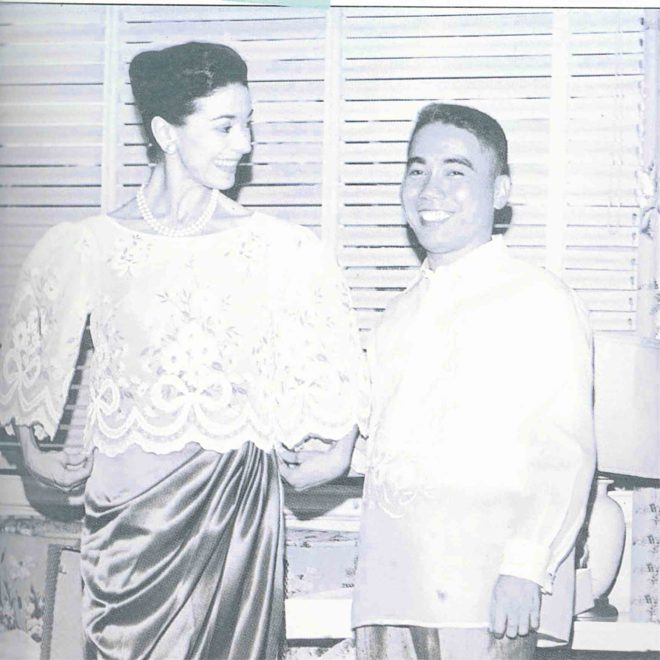
authored, “Philippine Costume”
1987
José “Pitoy” Moreno, anointed “fashion czar of Asia,” will present his retrospective collection from Jan. 28 to Feb. 2. That’s six consecutive, glitterati-packed nights (more than a thousand people a night), the biggest number of gala nights a Filipino designer has ever had.
If you’re going there just to see a fashion collection, you’re missing the point. Pitoy Moreno isn’t only about fashion.
Pitoy is a national institution. He is in a league of his own. Perhaps no other Filipino celebrity has fluttered around the thrones of kings and queens—the Philippine variety included—longer than Pitoy has. From the Carlos Garcia administration down to the Ferdinand Marcos dynasty, he has seen them up close— “bedroom close,” an observer puts it.
Presidents lose power and first ladies, their senses. Technocrats outlive their usefulness. Cronies skidoo with their pile. Socialites turn into have-beens. Pitoy Moreno survives and watches the power set come and go.
He is the consummate power-watcher. Anyone writing the history of the Philippine presidency would be wise to get some juicy but unofficial data from Pitoy.
But, you ask, how about today during the Cory Aquino era? Pitoy was closely identified with the Marcoses—therefore, he must be an outcast in today’s political and social order. Think again.
Take note of the people behind those six gala nights.
The Jan. 28 gala is sponsored by the Ninoy Aquino Movement spearheaded by Senator Heherson Alvarez, Precy Lopez Psinakis and Ching Montinola; the Jan. 29 show by the University of the Philippines Alumni Association led by Philippine National Bank president Edgardo Espiritu, publisher and presidential friend Betty Go-Belmonte and UP professor Elena Fernando; the Jan. 30 by the Heart Foundation; the Jan. 31 by Ramon Lee of ITM; the Feb. 1 by DMT Concept of Bingle Diago and Paul Mathay; the Feb. 2 by Rotary Club of Manila led by Boy Guevara and Vince Carlos.
Expected to grace these occasions are government officials from the wide political spectrum—from Senator Johnny Ponce Enrile to Vice President Salvador “Doy” Laurel and “perhaps, just perhaps”—Pitoy prefers to be coy and noncommittal about this—President Cory Aquino.
Pitoy Moreno’s drawing power in this political administration isn’t really zilch. And even if it were, he really wouldn’t lose sleep over it, he says.
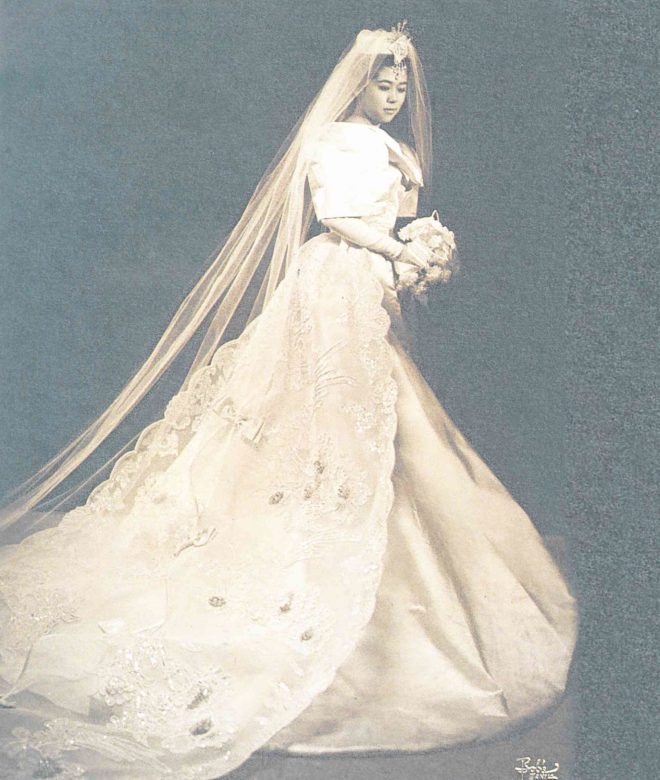
‘That was mean’
“It simply doesn’t bother me,” he says, referring to the post-1986 Edsa Revolution talk among society wags that he’s “out” of the power orbit.
“In an interview, a couturier took potshots at me, alluded to me when he said, ‘Mayroon diyan nagtatalop pa ng sibuyas sa palasyo,’ apparently referring to my closeness to the former First Couple. I never did that. Although I thought that was mean. I’m not really affected by all that.”
Pitoy is one person who’s hardly affected by anything, least of all shifts in the political wind. “Politics?
Hindi ko dinidibdib ’yan. I always defer to my friends (meaning both sides of the fence).”
If you’re familiar with his career or if you’ve been around him, you’d know what he means—giving in to friends.
To begin the story, Pitoy is a Manileño. The son of marine engineer José and enterprising businesswoman Felicidad, Pitoy grew up in Gagalangin, Tondo, with older sister Virginia, the well-known poetess, younger brother Victorico, now deceased, and younger sister Milagros.
He was named after his father and was given the nickname Pitoy—a variant of Pepe, his father’s nickname, and an apparent allusion to his small build. Since his father was a ship captain, the family was quite well off (he died at sea during World War II).
He, Ninoy and other “brods” kept Doy (Laurel) company on the eve of his wedding
As a young boy during the Japanese Occupation, he spent his time with his neighbors—
two brothers—who sewed women’s clothes.
From them, he learned the rudiments of sewing. In college, he studied fine arts at the University of the Philippines and against his will, or so he said, joined the Upsilon Sigma Phi fraternity, where his initiation into exclusive society began.
According to him it was Gerry Roxas, who would later become senator and vice presidential candidate (and father of Mar Roxas), who masterminded his entry into the fraternity.
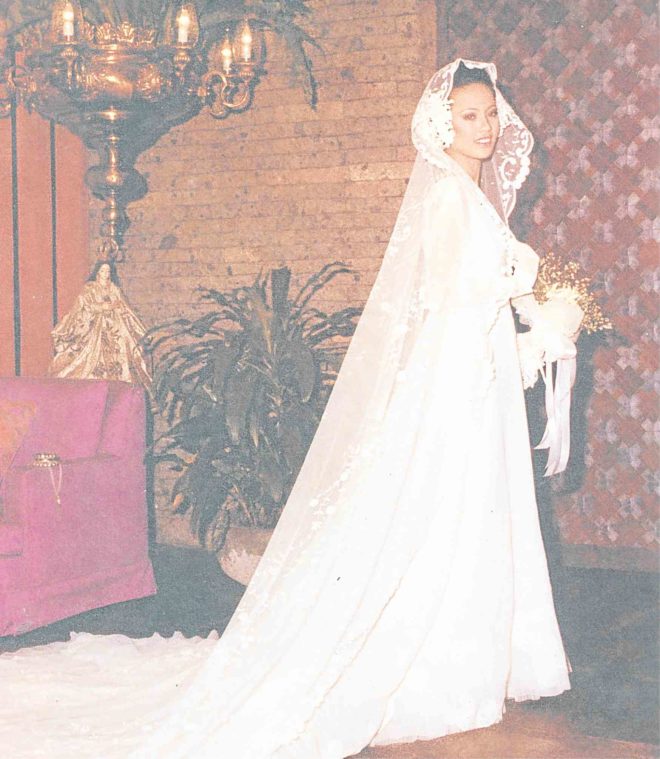
“Kasalan”
Ballet skirt
Pitoy loved to recount what he and other neophytes were made to go through during initiation. He was made to wear a ballet skirt and “dance” before a last-full-show movie theater audience, and another late night, he was made to crash into an Anatomy room full of cadavers in the medicine building.
Having passed the initiation, Pitoy became the “brod” to Marcos, Doy Laurel, Ninoy Aquino, Joker Arroyo and other men who would have the power to make or unmake our national life.
He would become the close friend as well of the prominent women of UP— Celia Diaz (later Laurel), soprano Fides Cuyugan Asensio, First Daughter-to-be Linda Garcia, Emma Benitez (the wife of foremost art collector Don Luis Araneta), artist Araceli Dans and other women who would later spice up Philippine politics, the arts and high society.
By having their dresses made by Pitoy for about P80 each, bus fare included, these UP coeds started this gregarious fine arts student on a potentially lucrative and powerful career.
“I was the only man allowed to enter the women’s dorm,” Pitoy recalls the “fitting” chores. He did it by befriending the house master. (Very Pitoy.)
That was in the mid-’50s when Pitoy told himself he’d never become a fashion designer, even if he had his sewing jobs.
In the late ’50s, he became a fashion designer and opened a shop on Taft Avenue, Manila.
In between meeting the demands of a budding career, Pitoy managed to squeeze in some rather interesting chores.
He accompanied Doy and Ninoy in serenading Celia, with Doy trying his best to play the violin. He, Ninoy and other brods kept Doy company on the eve of his wedding.
He would strike a closer acquaintance with the young Ferdinand Marcos and Roquito Ablan (later political kingpin in Ilocos). Later on he would get the fledgling lawyer Joker Arroyo to handle his legal cases. (Through the years Pitoy has demonstrated a penchant for litigation, whenever he feels wronged—be it by an unscrupulous textile vendor or a prominent painter with whom he had a rather physical fight during the opening of a restaurant in Mabini in the early ’80s—a much talked-about incident. Pitoy says he was provoked so he grabbed the first “weapon” nearest him—a fork. He sued the other party and the court case dragged on for years, until the court ruled in Pitoy’s favor and the losing party was ordered to indemnify Pitoy with P2. Pitoy says he was just trying to make a point.)
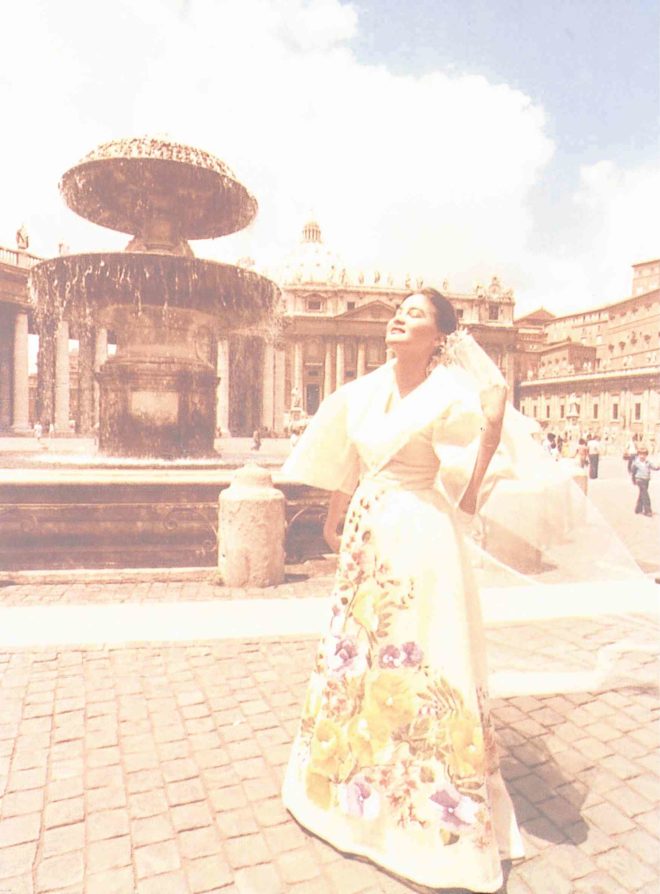
Big break
His first big break came when he did the bridal gown of socialite Nenette Buencamino, followed by a terno for Josie Trinidad for a fashion show, a maria clara for Celia Laurel and Emma Benitez to be worn in a play at Manila Grand Opera House.
When Carlos Garcia became president, Pitoy did the formal wear of First Lady Inday and First Daughter Linda. He was slowly but surely becoming the Pitoy Moreno.
When Diosdado Macapagal was sworn in as president, Pitoy did the inaugural terno of First Lady Eva. During the Macapagal era, he and Eva made kimona the vogue—to symbolize simple living.
The “bedroom” proximity to the powers-that-be had started, and would go on—indefinitely.
Despite his close associations with opposing political forces, it was amazing how Pitoy could walk the political tightrope, never compromising his personal loyalties. He never campaigned in any presidential election, he claims, even if there were times the Macapagals and the Marcoses would be in his shop coincidentally at the same time.
At the height of the campaign for the snap presidential election, he now says, he was careful not to talk about the late Ninoy with the Marcoses, “Nakakahiya sa widow ng friend ko,” he says.
But despite his avowed indifference to politics—he campaigned only for his former models Maita Gomez (who ran for Congress) and Conchitina Sevilla Bernardo (who ran for Makati vice mayor)—Pitoy is a born politician. He knows how and when to rush aid to people in need—sending cookies to Ninoy in jail, sandwiches to Fidel Ramos during the Edsa Revolution, gifts to Imelda Marcos, now on exile in Hawaii.
Pitoy the tightrope walker is also cool when crossing barriers—political, social and others. There was a time during the cease-fire (with the armed Left) when he would have Joker on the phone, Ming Ramos on the other line, while readying the barong National Democratic Front negotiator Tony Zumel would wear to his first TV appearance.
Now on his 30th year in fashion, he’s preparing a 120-piece collection that will represent three decades of his career. Nick Joaquin has also been at work on Pitoy’s biography. There’s nothing more he can ask for, he says, except that Philippine costumes be preserved and Philippine fashion develop into an industry.
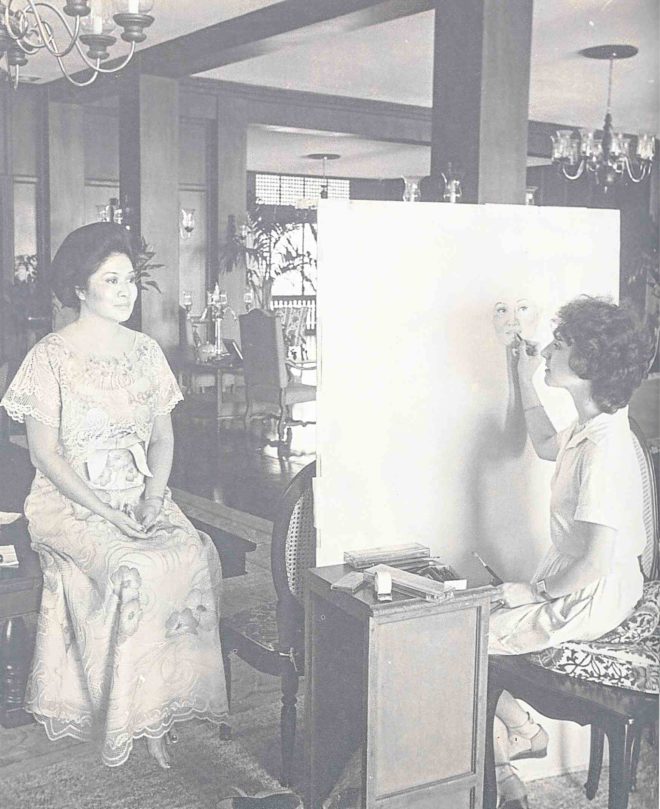
—PHOTO FROM “PHILIPPINE COSTUME”
1991
Eras from now, when society snoops of the late 21st century dig up the juicy lowdown on the Filipino weddings of the 20th century, a name they will inevitably come across in big bold letters is Pitoy Moreno—or J. Moreno, as the signature on the excavated sketches of bridal gowns should read.
For Pitoy Moreno is that sovereign thread—or that ubiquitous dangling bead, if you will—running through the colorful tapestry that is today’s Filipino wedding, the elite Filipino wedding. Many a Filipino designer makes bridal gowns for the bold-faced names of Philippine society, each bead as prestige-laden as the other.
In the case of Pitoy, however, designing wedding gowns is not his only claim to fame and power.
As far as Pitoy is concerned, preparing for a wedding, in a way, starts way before the dress design; it starts with the matchmaking. When Imee Marcos was in her teens and her parents wanted to set her off on a vibrant social life—the right vibrant social life—it was Pitoy who was tasked by the First Couple to mount the party where he invited Manila’s right eligibles, including the scion of an industrial clan, who later became Imee’s boyfriend. This was long before Tommy Manotoc and, as every society-watcher worth her passé bustier knows, Pitoy had nothing to do with the Manotoc-Marcos chemistry; by that time Imee already could very well fend for herself.
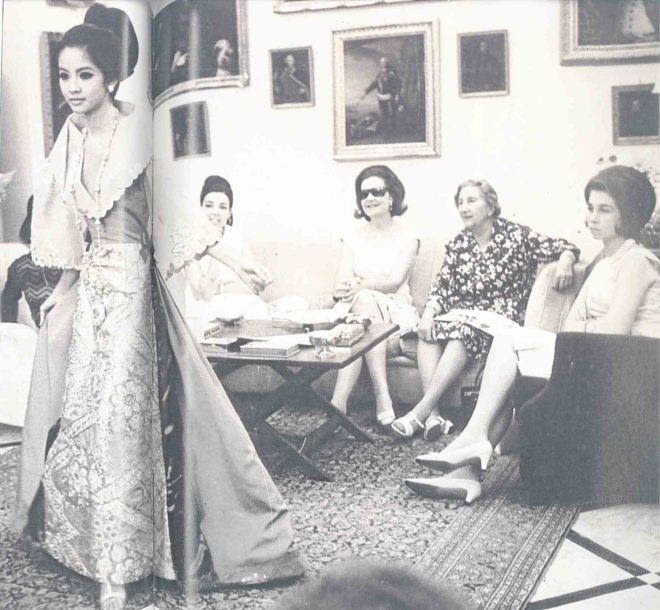
Good track record
Other than that, Pitoy has a good track record—Doy-Celia Laurel, to name one. He also has the uncanny ability to nip in the bud any friction between the potential in-laws. He’s also into arranging the wedding music, orchestrating the nuptial rites and reception, press releasing the bridal gown sketches, and spelling out honeymoon courtesies (there’s such a thing, says Pitoy).
Why does he bother with all this and not content himself with designing the gown, like any leading designer does?
Pitoy is not just a top designer. Pitoy is power. Of course, anyone who has observed recent social history knows only too well that Pitoy, with Dr. Eleuterio “Teyet” Pascual, has lurked in the corridors of Malacañang, especially during the Marcos administration. He has played man-in-waiting for many a first lady, serving as balm to the first lady’s politics-strained nerves, a nemesis to the other-in-house sipsip.
But to Pitoy, power means more than social or political connections. It is a stimulus, the ultimate aphrodisiac of life. The absolute inspiration.
Manila’s other powerful designers, dead and living, have far simpler stimuli to the process of creation—for the late Ramon Valera, it was the challenge of reshaping the basic terno; for Ben Farrales, the Muslim culture and religion (Congregacion del Nombre Santissimo); for Auggie Cordero, the movies, magazines and books; for Inno Sotto, the arts and music. For Pitoy, the feel of power—its labyrinthine turns—is the great impetus to creativity, wielding it, seeing people bow before it. It poses the challenge to his imagination.
If you know this, you’d understand why Pitoy makes weddings the way he does, which is like no other designer in Manila. He loves working with—and on—people. On the day of the wedding, he loves giving instructions to the participants—
be they political bigwigs or social X-rays, from the wedding photographer, choir conductor to the bride and groom, and the mother-in-law. Nobody is spared, not even the priest.
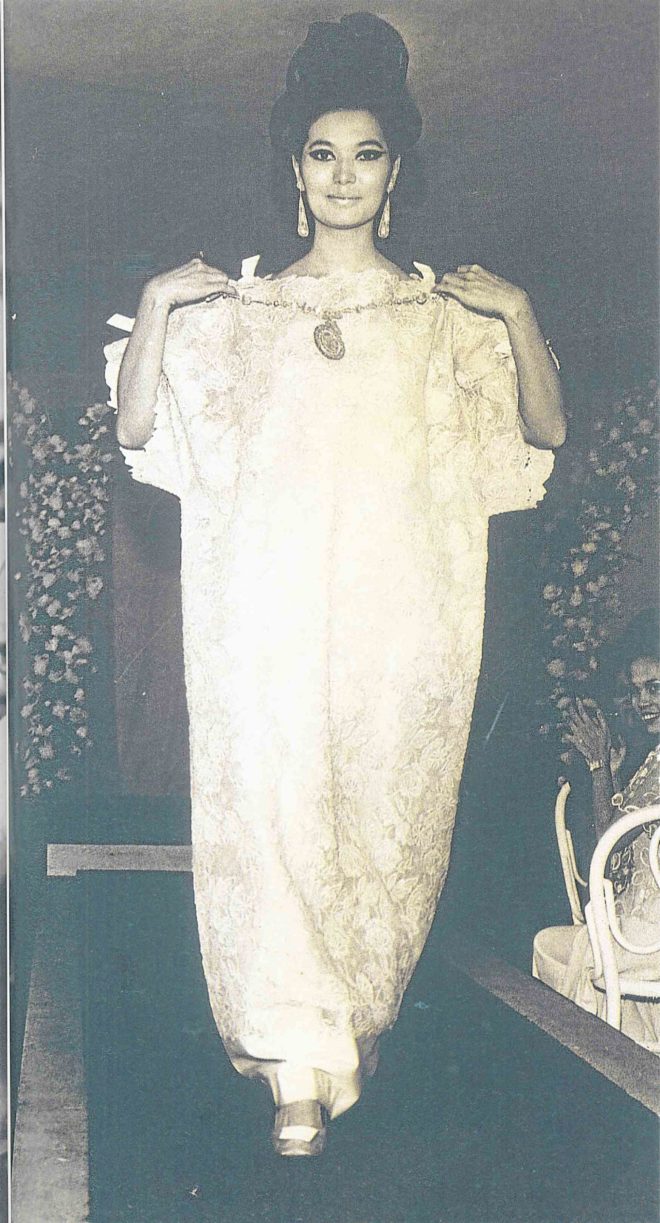
Iron grip
And you can’t but succumb to Pitoy’s “kasalan” power because you honestly believe that on the wedding day Pitoy knows best—decades of iron grip on that social/political registry, not to mention the media, guarantee that.
“A wedding comes only once in a lifetime, so every wedding is a production, and I enjoy mounting a production. I never tire,” Pitoy explains the high.
Pitoy Moreno has been in the business for 30 years, and with at least 50 weddings a year, he has easily chalked up more than a thousand weddings. He has seen them all—from the ’50s to the ’90s—enough to be able to produce a coffee-table book “Kasalan.”
Since 1955, when as a popular fine arts student and Upsilonian at UP, Pitoy made his first wedding gown for his friend, Araceli Limcaco, the bride-to-be of José Dans, who’d be Transport minister in the Marcos’ administration, Pitoy has not stopped designing ternos and bridal gowns and trying to reshape the Filipino wedding tradition.
The Filipino wedding has changed drastically, Pitoy says. The weddings of the ’50s and ’60s, he says, were really extravagant and fabulous, with an entourage having as many as six bridesmaids. In the turbulent ’70s, the growing political consciousness and unrest couldn’t but affect the social landscape; bridal gowns became austere and had shorter trains—“People were inevitably affected by social condition,” Pitoy recalls his no-fun years.
“Moreover, in the rebellious ’70s, people would rather live-in than get married and that affected the bridal scene, if not business.”
This, however, changed in the late ’80s, when lifestyles everywhere revived traditions, and reconciled themselves with Establishment values. “It’s back to the weddings because people were getting married, not just living in,” says Pitoy.
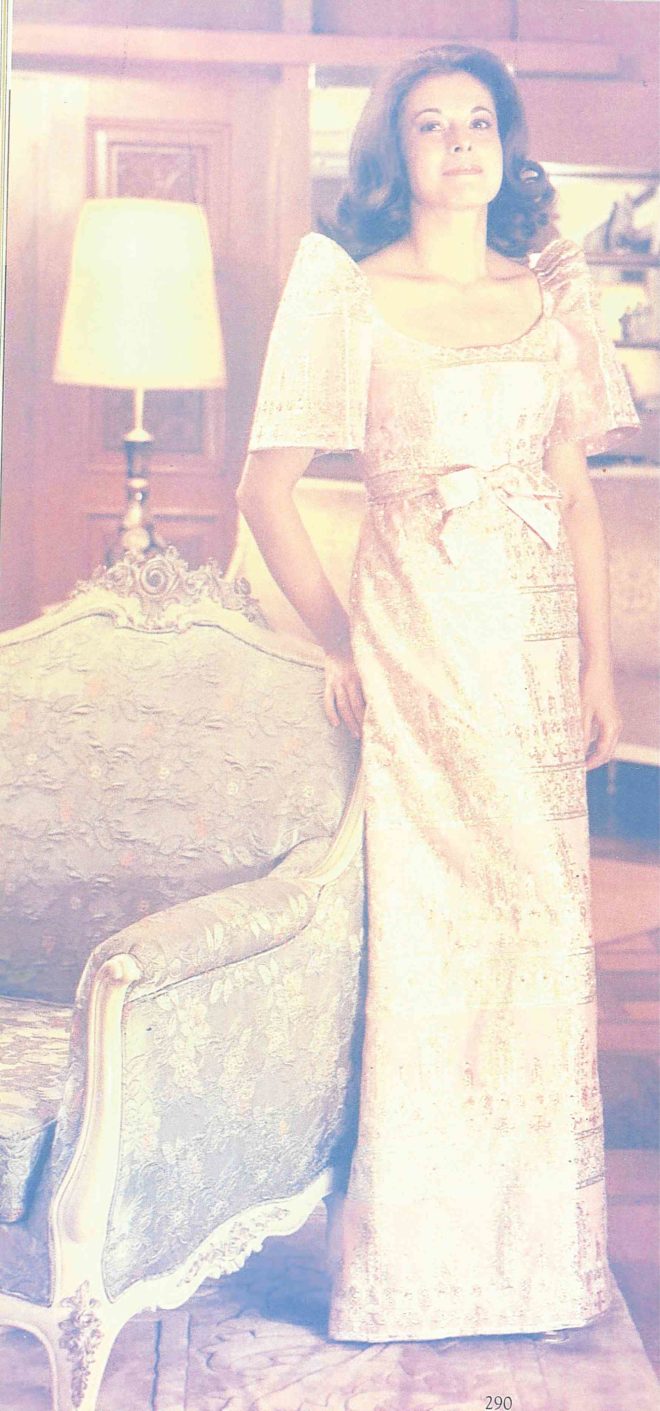
Grand weddings
The ’90s, he says, is seeing the emergence of grand weddings again. “And now the young couples themselves, not their parents, look after the preparations. They’re in charge.”
The young couples are in charge—with Pitoy. For Pitoy’s hand is evident everywhere. Among the innovations he’s introduced was the procession sequence. It used to be that only the ring bearer, flower girl, bridesmaids preceded the bride down the aisle, and the bride was followed by the major sponsors.
In the early ’60s, Pitoy wanted to make the bride the only star of the procession, so he made the bride march last, preceded by the entire entourage.
What all this points to is that Pitoy is omnipresent in his weddings—from designing the gown, refining the bride’s hairdo (you want your hair down, Pitoy wants it pulled away from the face, so that way it will be), dolling up the cake, choosing the music, fixing the church, to directing the nuptial rites and reception. That entails not only tremendous clout over the bridal families, not only stamina, but more important, astute negotiating and refereeing skills.
Negotiations over a wedding have given Pitoy—and us who are always regaled by his colorful stories—some interesting insights into the psyche of the aisle-bound Filipino.
To begin with, a Filipino wedding could be a complicated affair, given the extended, tight-knit family; not only the aisle-bound couple has a say on how the wedding should be. The parents and other elders in the clan have a big say on everything—from the motif to the guest list.
“It’s usually the mothers (of the bride and groom) who want to take charge, and whoever has a stronger character wins,” Pitoy observes.
Pitoy has a way of solving these family disagreements. “I ask the two parties to call me separately. That way, you avoid confrontation. Then I straighten out matters with each one, arrive at a compromise, without anyone losing face.”
But if matters are still unresolved, Pitoy follows a basic, most pragmatic rule—“Listen to whoever will foot the bill. Usually it’s the bride’s side who wins, because the bride should always have the prerogative. A wedding is always the bride’s day.”
He had a bride-to-be, who, upon learning that her groom was such a tightwad who kept haggling over the gown’s price, decided to call off the wedding. Another case involved a bride’s mother who wanted to upstage the bride so she badgered Pitoy to show her the bridal gown’s sketch so she (the mother) could have something similar, and better done. Pitoy didn’t.
But other than these cases, Pitoy says he hasn’t had hitches in his weddings. “I solve every problem myself.”
That is done with great effort sometimes. Once, just moments before the wedding, Pitoy had the florist thrown out of the church because she kept on arguing with Pitoy and didn’t stick to his instructions. Pitoy also directs the photographers and his rule is, a photographer should never ride in the bridal car. “He’s all sweaty and rough. Nagugulo lang ang couple,” he explains.
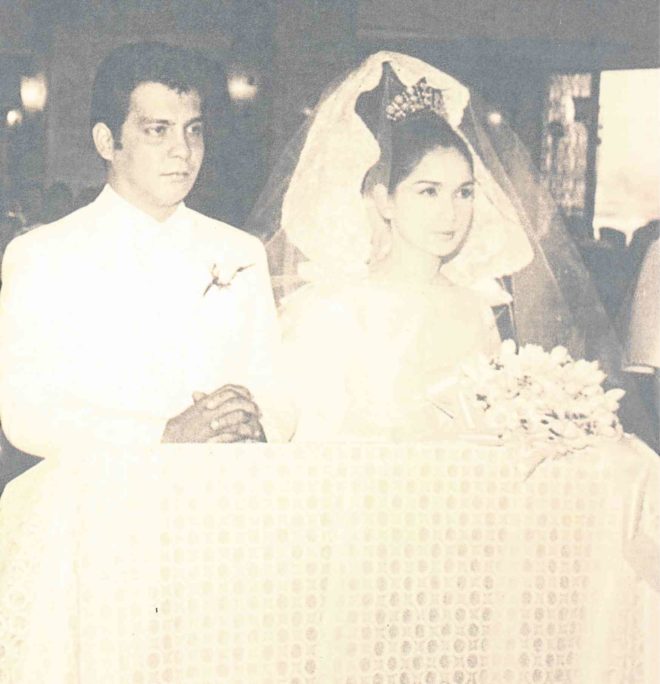
His detailed advice to couples: 1) list down all the things needed, from invitations, guest list, music, giveaways to rings, bridal book, photographer, decorator, cake, shoes; 2) the couple should sit down and iron out the kinks, the bride should have the last say, it’s her day; 3) get enough rest—“Couples should not look exhausted from all those preparations,” 4) on the day itself, keep calm. And Pitoy adds—“Get all cues from me.”
Pitoy explains the last rule. “I run the wedding because, esto, nobody can attend to details on the wedding day itself. Lahat taranta. So they give in, be- cause they have no alternative idea. Only one mind should be directing things on the day itself.”
There was a major wedding, however, where Pitoy never had his way—that of Irene Marcos and Greggy Araneta. Pitoy was—and is—a close family friend, but he didn’t make Irene’s gown, though he was around before and on the wedding day.
Other than that, however, Pitoy Moreno, the power on and off the aisle, has had a winning streak indeed. His weddings have always gone just the way he wanted them, including the wedding of Solita and Christian Monsod decades ago.
We wonder, we told Pitoy, had the Monsods’ wedding taken place today, would he still have his way over the bride Solita, the iron-willed and feisty economic expert both admired and feared in the country today?
Pitoy knits his brows and grins, “I’m sure I will.”


